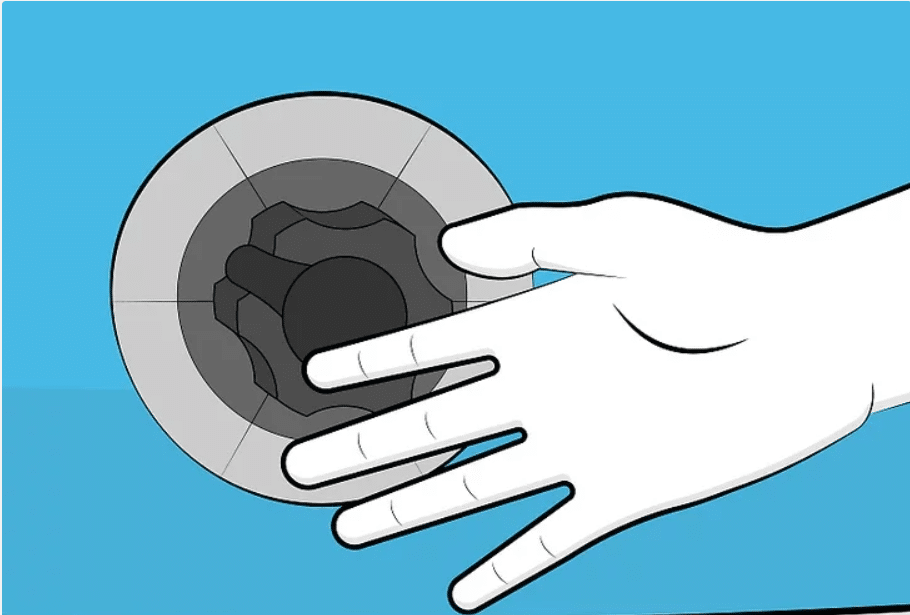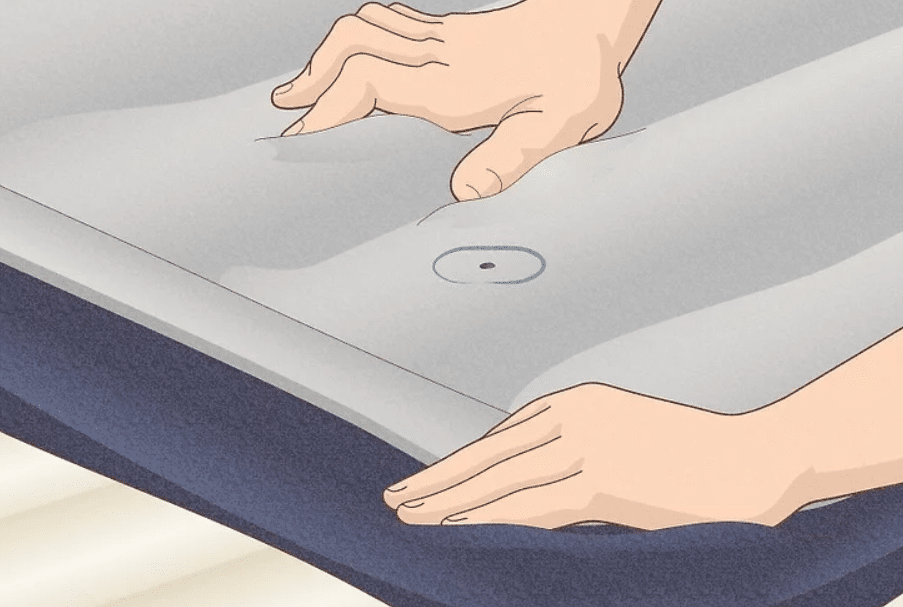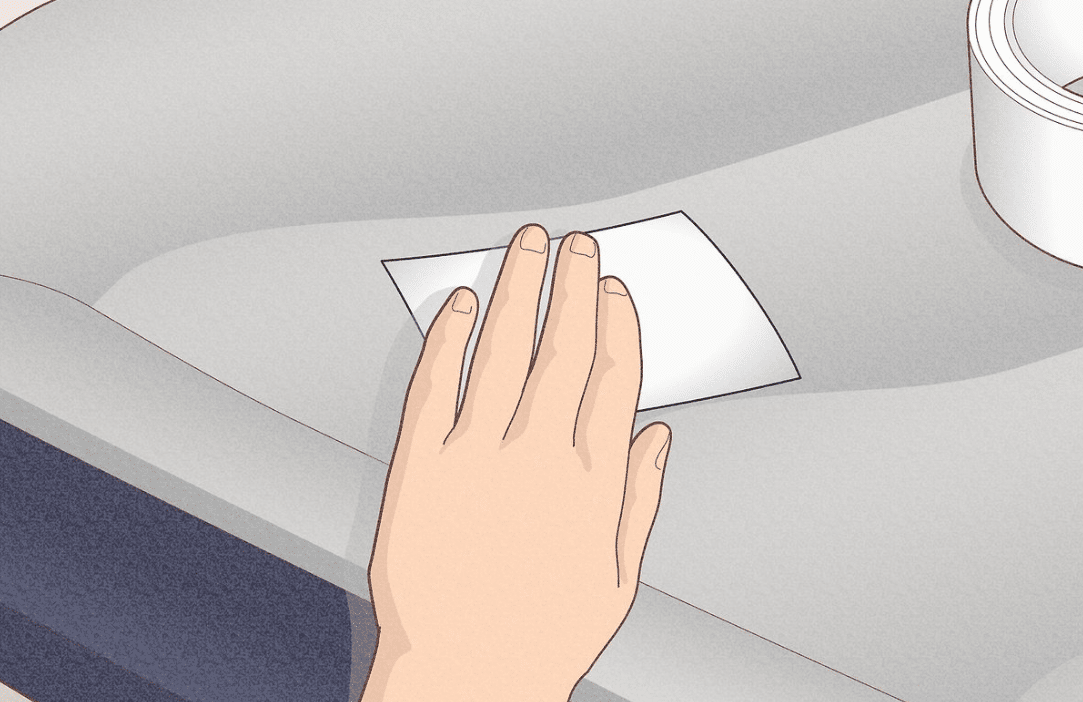Dealing with a leak in an air mattress can be a frustrating experience, disrupting your comfort and sleep. However, with the right approach, fix Leak in Air Mattress is entirely possible.
Whether caused by a puncture or a faulty valve, addressing the issue promptly can extend the lifespan of your air mattress and save you the hassle of purchasing a new one.
This guide will provide you with effective techniques and steps to identify and repair leaks in your air mattress, allowing you to restore its functionality and enjoy a restful night’s sleep once again
Table of Contents
About Air Mattress
The air mattress is a bedding surface or bed that is filled with air. It is just an inflated mattress composed of polyvinyl chloride (PVC) or textile-reinforced urethane plastic or rubber. This is also termed as either an airbed or just a blow-up bed. The inflated mattress may be compressed and placed in a tiny space.
These are blown either manually or by an immersion heater by puffing into a nozzle. When a valve opens, some of these are instantly blown up to a specified capacity, then physically or through compressor expanded further.
Stationary air mattresses generally resemble regular beds except for the appearance of a hose (single air container) or two hoses (two air chambers) sticking out from the edge of the bed.
Those tubes will be attached to air inflating equipment with intake and exhaust valves and a motion sensor so each individual may customize the hardness during his or her portion to meet his or her own demands. With just a simple click on a controller, the stiffness may be changed high or low.
A Few Solutions for Fixing an Air Mattress Leakage
A deflating air mattress is the surest way to have a restless night. However, if the mattress leaks, you shouldn’t have to toss it away. Locating and repairing a defective air mattress is simple, and this can be found in homes using common household appliances and a low-cost patch kit.
Method 1 : Finding your Leak
- Recognize that almost all air mattresses release air over time. When you wanted to replace your mattress’s covering and look for flaws, keep in mind that almost no air mattress can store air permanently.
- To inspect for such a leakage, completely pump the air mattress. If it has been significantly compressed after few minutes, you most certainly have a leak. After you’ve blown up the mattress, lay upon that; it shouldn’t drop more than 1-2 inches beneath your bodyweight.
- If you’re really unsure whether it’s a leakage, elevate your mattress undisturbed and place a load on it, such as in many novels. It has a problem if it has been flattened beyond a bit in the early.
- Inspect to see whether the air valve is still open. Feel for any flowing air by placing your palm over its valve. It seems like that of a plug which you can unscrew to swiftly compress the mattress and is normally situated exactly beside the air compressor. Contact the vendor to get a new valve if yours is damaged or leaking.
- To check for leakage, turn the mattress onto its sides in a silent, big room. About most puncture wounds and leakage occur on the base of the air mattress as a result of individuals leaving items below the bed unintentionally. Ensure the mattress is entirely expanded before turning onto its sides to inspect the base.
- When you can’t locate anything, wet the palm of the hand and try again. The liquid will immediately evaporate due to the air exiting through the mattress, leaving your hand to feel chilly. To look for minor leaks, slide your wet palm all along the full area of the mattress, 2-3 inches away from it.
- When you still can’t discover the leakage, check for puffs with soapy water. Though some producers advise that this might cause bacteria and germs, soapy water is perhaps one of the most effective leak detection methods.
- With either ink or a highlighter, draw a circle around the leak. It would be virtually hard to locate the leak once the mattress has been flattened. Take note as to where the issue is so that you can quickly fix it.
- Properly compress and wipe the mattress. Just let the air out from the mattress when you’ve identified and designated your puncture. If you found the leakage using soapy water, blot it dried with only a towel and keep it in the sunshine for a minimum of 1-2 hours before coming to it.
Method 2: Using a Patch kit
- Purchase a repair kit: These may be found in the camping ground of almost every authorized retailer. They’re compact, inexpensive kits with adhesive, sandpaper, and patches for shelters, bicycle tires, and air mattresses.
When you’re in a hurry as well as the hole is minor, a bike tire patching should suffice. Various firm’s healing patches, provide specific air mattress repair kits that you could obtain digitally. Also, check if the patch kit may be used on polymer or vinyl.
- Flatten the mattress entirely. Allow all the air out from the mattress prior to proceeding since you really don’t want air to go beneath your patch and harm the adhesive.
- Any firm felt around your hole should be sanded off. If such a hole has been on the upper part of the mattress, the cushioning covering must be removed in order for the patch to attach. Wipe the felt layer with a wire brush or sandpaper unless you just have plastic protecting your leak.
- This soft layer is referred regarded as “flocking” by certain mattress manufacturers.
- Thoroughly clean the place where the spill occurred. Rinse the leaking area with soapy water or isopropyl alcohol to ensure that there is just no sand, grime, or debris around the puncture. Before continuing, make sure it’s absolutely dry.
- Make a patch about one-and-a-half times the size of your opening. If you wish to hide the leak completely, trim your patch to fits well over the opening with a centimetre more than of patch on all sides. If you’re using pre-cut patches, choose one with 1-2 cm of the area all-around opening.
- Follow the proper procedure while applying the patch. All patches work in one of two different ways: they may be affixed like tapes or special adhesive must be used before the patch can be attached.
- Allow 2-3 hours for the adhesive to cure on the patch. While holding the patch under pressure, put a heavy, solid item on top of it. Wait till the adhesive is dry before inflating your mattress.
- Inspect for leaks after inflating the mattress. Pay attention to any departing air with your ear immediately near to the patch. When nobody will be sleeping on it, keep it inflated overnight and check in the future to ensure no further air has escaped.
Method 3: Patching Your Leak without a Patch Kit
- Keep in mind that DIY repairs may invalidate your guarantee. Numerous mattress companies recommend you to utilize just patch kits or return the mattress back after them for repairing.
DIY patches are helpful, but they might void your mattress guarantee, so approach with caution. Duct tape could be used as a partial fix.
Duct tape’s adhesive isn’t designed to securely adhere to plastic, so this will ultimately dry up and flake away. When repairing a leak, don’t use hot glue. In virtually all circumstances, hot glue will melt a portion of your air mattress and enlarge the hole.
- If a problem seems to be on the head of the mattress, scrape down the delicate felt surrounding it. Although comfy, these fuzz will hinder your glue or patches from fully adhering all around the hole, allowing it to slip off soon after application. Wipe out the felt layer with a wire brush or sandpaper only until plastic remains surrounding your leak.
- To make a shower door, cut out a square of thinner, pliable plastic. If you’re not using any expert patches or can’t afford to buy some, you may make a patch out of household items. Tarps and shower drapes are both effective and easy to trim to size. Please ensure your block is wide enough to accommodate the leak and has at least one centimetre on all sides.
- Powerful glue should be used to secure the DIY fix. Apply a substantial amount of glue to that same leak, at minimum the area of the chosen patch. Don’t really attempt all that with your child’s crafting adhesive container. To apply your patch, you’ll need to have a powerful, dependable adhesive like superglue or Gorilla Glue.
- Leave the patch on the hole with a heavy item on the top of the patch. Place many thick books, a weight, or other equally heavy things on top of the patch as it cures to keep the pressure up. When you return after 6-8 hours, make sure the patch is securely fastened to the mattress.
Read More Posts :
- How To Dispose Your Mattress?
- The Complete Guide To Clean Your Mattress
- When Should You Replace Your Mattress?
- Mattress Firmness Chart
- Plushbed Latex Mattress Coupons
- Brooklyn Aurora Reviews
- Sheex Mattress Review
- Best Hybrid Mattresses For Comfortable Sleep 2025
Conclusion: How To Fix Leak In Air Mattress?
Air mattresses are formed up of many layers of protected synthetic fabric linked together just to create an airtight chamber. Any flaws in the fabric or seams might be the cause of a leak. It might take a little time for such flaws to turn into leaks.
Superior mattress edges are frequently joined by electronic welding, either RF (radio frequency) or ultrasonic, as well as the covering can keep the material sealed.
The above pointers should ensure that you have a restful night’s sleep using an air mattress on hand in case of an emergency.





